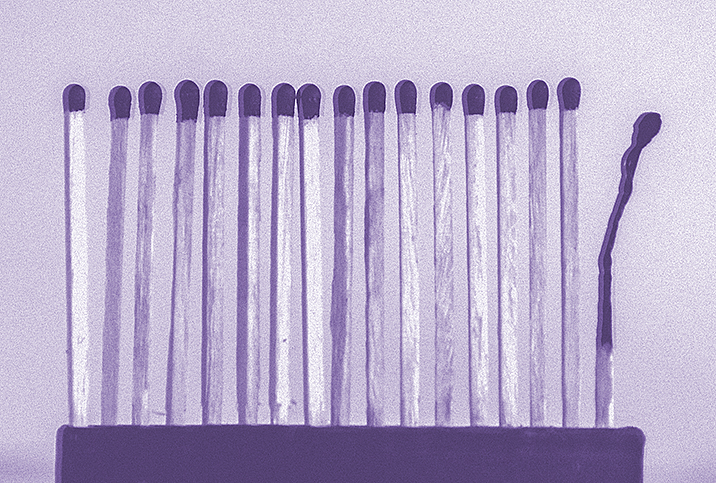Peyronie’s Disease: Myths & Misconceptions

Peyronie’s disease is a condition in which men develop fibrous scar tissue in their penis that causes it to curve, especially when it’s erect.
It’s noncancerous, and it’s not life-threatening, but Peyronie’s disease can have serious effects on a man’s quality of life. Sometimes the bend in a man’s erect penis is so profound or the pain so extreme as to make intercourse nearly impossible. Peyronie’s can also cause the penis to appear shorter, and for this and other reasons, it can cause men anxiety that may lead to erectile dysfunction (ED).
Here are a few common misconceptions about Peyronie’s disease. Relax, though, because we have the information you need to debunk them.
Myth: Peyronie’s always stems from some traumatic event involving the penis.
Reality: Not always. While it’s true that the scarring and penile curvature associated with Peyronie’s disease often emerges following a traumatic injury to the penis during sex, athletic activity or an accident, it can also arise without any apparent or obvious trauma to set it off.
Apart from micro-injuries to the penis, some Peyronie’s disease risk factors include:
- Family history of Peyronie’s disease
- Aging
- Connective tissue disorders
- Autoimmune disorders
- Diabetes with erectile dysfunction
- Prostate cancer treatment involving surgery
Myth: Once I have Peyronie’s, I have it for life.
Reality: Not only are there numerous treatments available that can reduce the scar tissue and thus minimize the penis curvature associated with Peyronie’s disease, it sometimes simply goes away on its own. Some of the treatment options your doctor or urologist might recommend, depending on the specifics of your condition, include:
- No treatment. Men with a curvature of fewer than 30 degrees are often told to wait out the first year of Peyronie’s disease to see if it will stabilize or even go away on its own.
- Injections. Collagenase, verapamil (blood pressure medication) and interferon have all shown satisfactory results when injected directly into the spot where scar tissue has built up.
- Nondrug interventions. Mechanical traction devices, penis vacuums and shockwave therapy are being studied to see if they can help reduce plaque (scar tissue) size and restore the penis to its former shape.
- Surgery. If Peyronie’s disease is so profound that it causes a curvature of more than 50 degrees, or if the man’s erections continue to be painful beyond the first year, a doctor might recommend surgery to remove the plaque.
Myth: Peyronie’s disease means painful erections for the rest of my life.
Reality: Even without treatment, Peyronie’s disease generally levels off after the initial phase, and the painful erections fade. Doctors have identified two distinct phases of the disease after onset: acute and chronic.
Acute phase is the period when the plaque is forming, whether as a result of trauma or other factors. This period usually lasts 12 to 18 months and may include these indicators:
- You may see bruising or discoloration.
- Your penis will start to curve, especially when erect.
- There may be pain when your penis is erect and sometimes when it’s flaccid.
The chronic phase, if left untreated, happens after the plaque has formed, usually about 12 to 18 months after your symptoms first presented. Here’s what is likely to happen:
- Penile curvature should stabilize, and plaque will stop forming.
- The pain will likely recede.
- You may experience ED, or symptoms of ED may worsen.
There’s a lot we don’t know about Peyronie’s disease. But some stories you may have heard are exaggerations at best and misinformation at worst.


















